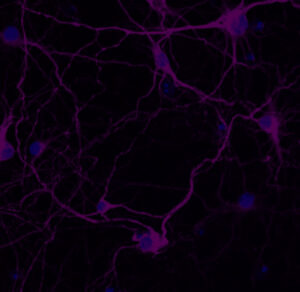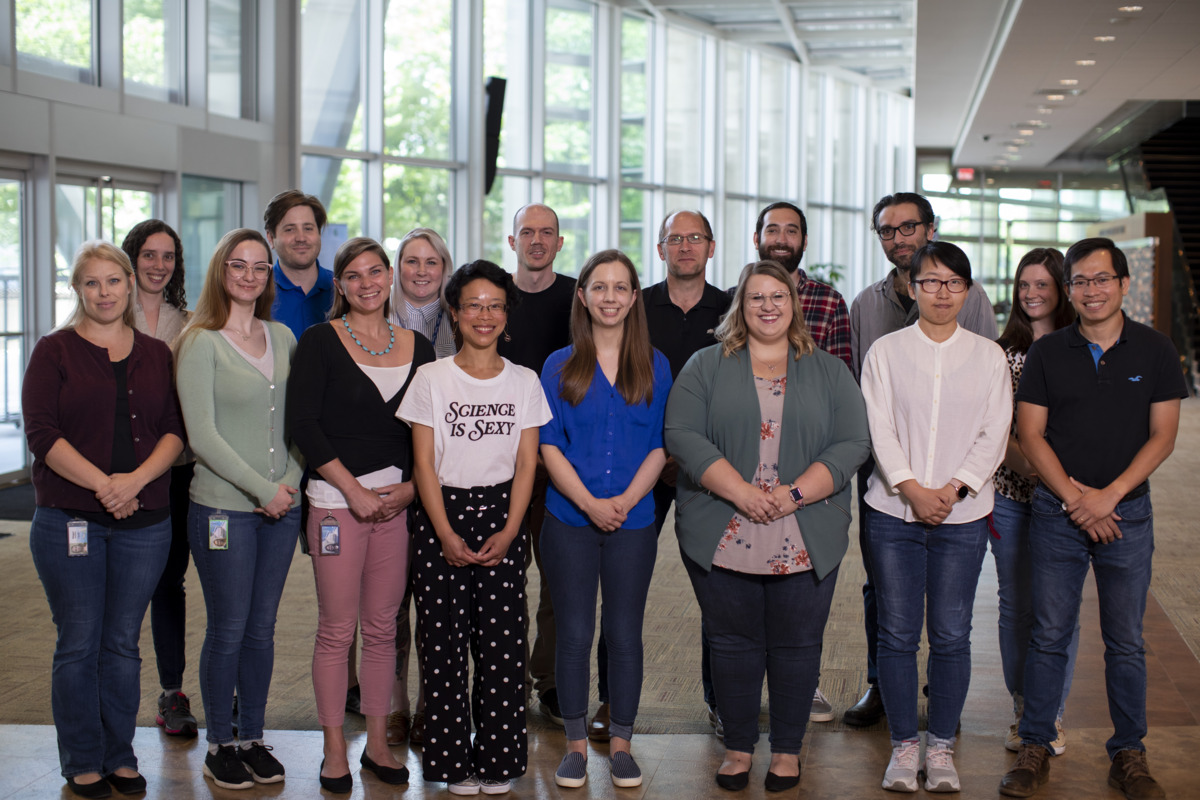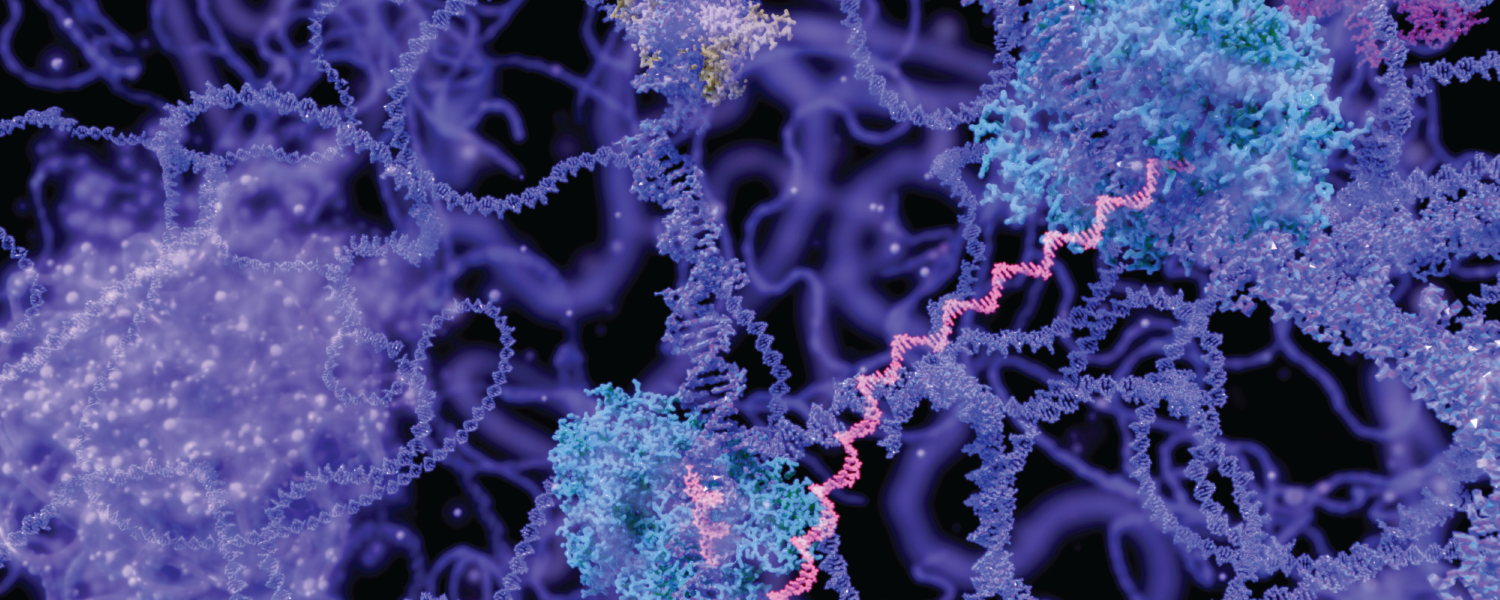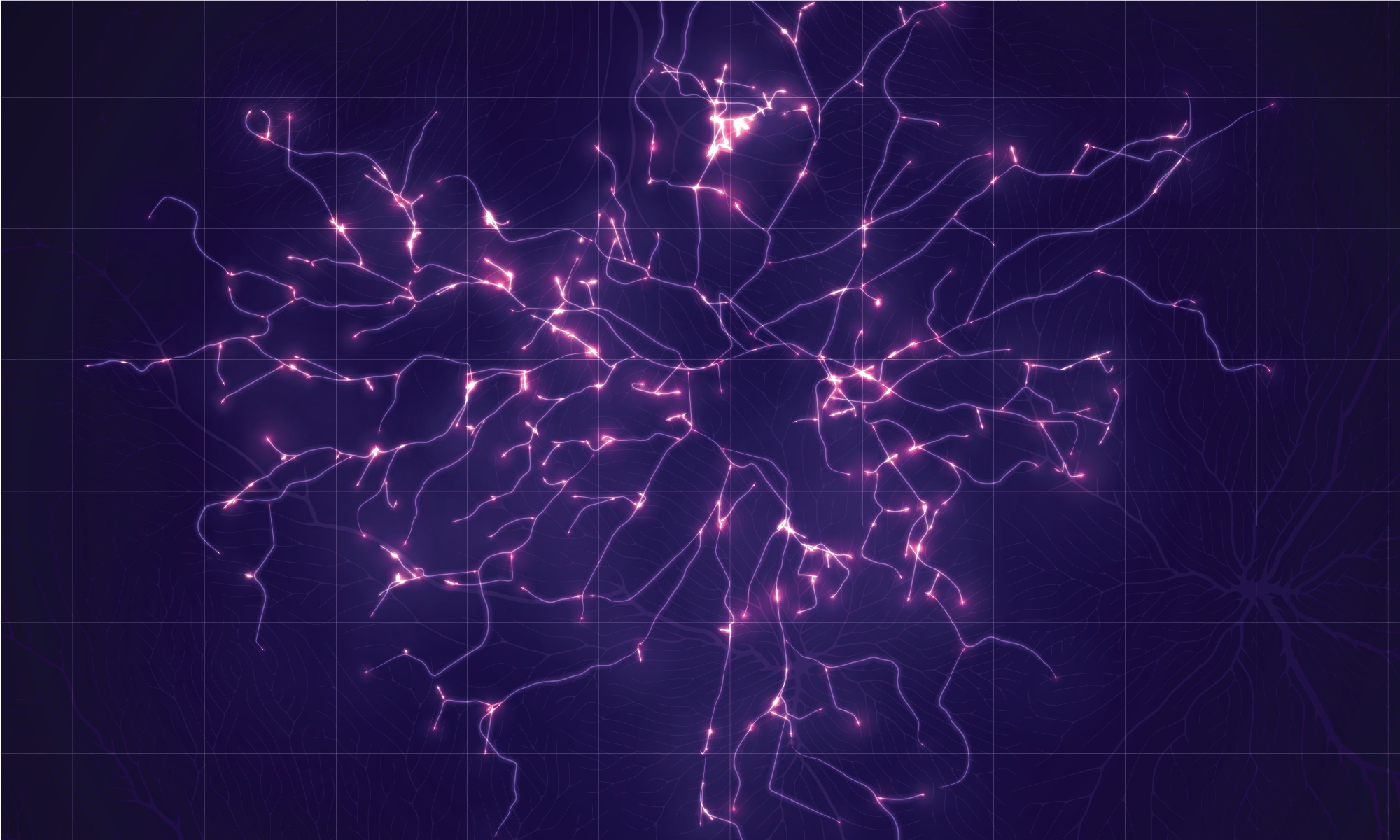Moore
Laboratory
 Molecular Neurodegeneration
Molecular Neurodegeneration
The Moore Laboratory investigates the molecular pathophysiology of Parkinson’s disease, a chronic progressive neurodegenerative movement disorder. The majority of Parkinson’s disease cases occur in a sporadic manner although 5 to 10 % of cases are inherited, with causative mutations identified in at least eight genes. The Moore Laboratory studies the normal biology and pathobiology of gene products that cause inherited Parkinson’s disease, including the common leucine-rich repeat kinase 2 (LRRK2, PARK8), the retromer component VPS35 (PARK17), the E3 ubiquitin ligase parkin (PARK2), and the lysosomal P5-type ATPase ATP13A2 (PARK9).
The laboratory’s goal is to elucidate the normal biological function of these proteins in the mammalian brain and the molecular mechanism(s) through which disease-associated variants in these proteins induce neuronal dysfunction and eventual neurodegeneration in inherited forms of Parkinson’s disease. Through a clear understanding of the physiological function and pathological dysfunction of these proteins, the Moore Laboratory hopes to gain important insight into the molecular mechanisms and cellular pathways underlying neurodegeneration in inherited and idiopathic forms of Parkinson’s disease.
The laboratory adopts a translational approach to identify and validate novel therapeutic strategies that may slow or halt progressive neurodegeneration in Parkinson’s disease. To achieve these goals, the lab uses a multidisciplinary approach employing molecular, cellular and biochemical experimental techniques in a number of model systems including human cell lines, primary neuronal cultures, the baker’s yeast Saccharomyces cerevisiae, transgenic, knockout and viral-mediated gene transfer rodent models, and human brain tissue. The Moore Laboratory’s mission is to understand the molecular pathogenesis of Parkinson’s disease in order to develop novel targeted therapies and neuroprotective strategies to treat or prevent this devastating disease.
Join Our Team
We are continually seeking highly motivated individuals with a strong publication record to join our energetic and fast-paced lab as postdoctoral fellows. A Ph.D. with molecular and cellular biology or neuroscience experience is required to apply. Additional experience in biochemistry, proteomics, microscopy, viral vector technology, neuropathology and/or behavioral assays is preferred (but not necessary). Interested candidates should email Dr. Moore to inquire. Graduate students interested in joining the lab are encouraged to apply through Van Andel Institute Graduate School.
Recent News & Press
Learn MoreOur Impact
We’re raising thousands to save millions.
We’re turning hope into action for the millions of people around the world affected by diseases like cancer and Parkinson’s. Find out how you can help us make a difference.
- 121 peer-reviewed papers published in 2023
- 62 peer-reviewed papers published in high-impact journals in 2023
- 55 clinical trials launched to date
Darren Moore, Ph.D.
Chair and Professor, Department of Neurodegenerative Science; Director, MiND Program
Areas of Expertise
Inherited Parkinson’s disease, LRRK2, VPS35, Parkin, ATP13A2, neurodegenerative disease models
Biography
Dr. Darren Moore received an undergraduate degree from the University of East Anglia in 1998 and a Ph.D. in molecular neuroscience from the University of Cambridge in 2001 in the laboratory of Dr. Piers Emson. He conducted postdoctoral training with Professor Ted Dawson in the Department of Neurology and Morris K. Udall Parkinson’s Disease Research Center of Excellence at the Johns Hopkins University School of Medicine in Baltimore. Dr. Moore joined the faculty at Johns Hopkins in 2005 as an instructor and became assistant professor in 2006. In 2008, Dr. Moore moved to the Swiss Federal Institute of Technology (EPFL) in Lausanne as an assistant professor in the Brain Mind Institute. In 2014, Dr. Moore joined the faculty at VAI as an associate professor in neurodegenerative science. He subsequently was promoted to professor in 2017 and to chair of the Department of Neurodegenerative Science in 2020. His laboratory is interested in understanding the biology and pathophysiology of gene products associated with inherited Parkinson’s disease.
SELECTED PUBLICATIONS
Erb ML, Sipple K, Levine N, Chen X, Moore DJ. 2024. Adult-onset deletion of ATP13A2 in mice induces progressive nigrostriatal pathway dopaminergic degeneration and lysosomal abnormalities. NPJ Parkinsons Dis 10(1):133.
Yuan Y, Li H, Sreeram K, Malankhanova T, Boddu R, Strader S, Chang A, Bryant N, Yacoubian TA, Standaert DG, Erb M, Moore DJ, Sanders LH, Lutz MW, Velmeshev D, West AB. 2024. Single molecule array measures of LRRK2 kinase activity in serum link Parkinson’s disease severity to peripheral inflammation. Mol Neurodegener 19(1):47.
Wyse RK, Isaacs T, Barker RA, Cookson MR, Dawson TM, Devos D, Dexter DT, Duffen J, Federoff H, Fiske B, Foltynie T, Fox S, Greennnamyre JT, Kieburtz K, Kordower JH, Krainc D, Matthews H, Moore DJ, Mursaleen L, Schwarzschild MA, Stott SRW, Sulzer D, Svenningsson P, Tanner CM, Carroll C, Simon DK, Brundin P. 2024. Twelve years of drug prioritization to help accelerate disease modification trials in Parkinson’s disease: The International Linked Clinical Trials Initiative. J Parkinsons Dis 14(4):657–666.
Rowlands J, Moore DJ. 2024. VPS35 and retromer dysfunction in Parkinson’s disease. Philos Trans R Soc Lond B Biol Sci 379(1899): 20220384.
Dues DJ, Ma Y, Nguyen APT, Offerman AV, Beddows I, Moore DJ. 2023. Formation of templated inclusions in a forebrain a-synuclein mouse model is independent of LRRK2. Neurobiol Dis 188:106338.
Dues DJ, Tran Nguyen AP, Becker K, Ma J, Moore DJ. 2023. Hippocampal subfield vulnerability to α-synuclein pathology precedes neurodegeneration and cognitive dysfunction. npj Parkinsons Dis 9(125).
Dues DJ, Ma Y, Tran Nguyen AP, Offerman AV, Beddows I, Moore DJ. Pre-print. Formation of templated inclusions in a forebrain α-synuclein mouse model is independent of LRRK2. bioRxiv.
Chen X, Tsika E, Levine N, Moore DJ. 2023. VPS35 and α-Synuclein fail to interact to modulate neurodegeneration in rodent models of Parkinson’s disease. Mol Neurodegener 18(1):51.
Fernandez B, Chittoor-Vinod VG, Kluss JH, Kelly K, Bryant N, Tran Nguyen AP, Bukhari SA, Smith N, Moore DJ, West AB, Cookson MR, Nichols RJ, Hildiker S. 2022. Evaluation of current methods to detect cellular leucine-rich repeat kinase 2 (LRRK2) kinase activity. J Parkinsons Dis 12(5):1423-1447.
Williams ET, Chen X, Otero PA, Moore DJ. 2022. Understanding the contributions of VPS35 and the retromer in neurodegenerative disease. Neurobiol Dis 170:105768.
Sargent D, Moore DJ. 2022. Mechanisms of VPS35-mediated neurodegeneration in Parkinson’s disease. Int Rev Mov Disord 2:221–244.
Sargent D, Cunningham LA, Dues DJ, Ma Y, Kordich JJ, Mercado G, Brundin P, Cowell RM, Moore DJ. 2021. Neuronal VPS35 deletion induces spinal cord motor neuron degeneration and early post-natal lethality. Brain Commun 3(3).
Senchuk MM, Van Raamsdonk JM, Moore DJ. 2021. Multiple genetic pathways regulating lifespan extension are neuroprotective in a G2019S LRRK2 nematode model of Parkinson’s disease. Neurobiol Dis 151:105267.
Erb ML, Moore DJ. 2020. LRRK2 and the endolysosomal system in Parkinson’s disease. J Parkinsons Dis 10(4):1271–1291.
Dues DJ, Moore DJ. 2020. LRRK2 and protein aggregation in Parkinson’s disease: Insights from animal models. Front Neuro.
Nguyen APT, Tsika E, Kelly K, Levine N, Chen X, West AB, Boularand S, Barneoud P, Moore DJ. 2020. Dopaminergic neurodegeneration induced by Parkinson’s disease-linked G2019S LRRK2 is dependent on kinase and GTPase activity. Proc Natl Acad Sci U S A.
Beilina A, Bonet-Ponce L, Kumaran R, Kordich JJ, Ishida M, Mamais A, Kaganovich A, Saez-Atienzar S, Gerschlick DC, Roosen DA, Pellegrini L, Malkov V, Fell MJ, Harvey K, Bonifacino JS, Moore DJ, Cookson MR. 2020. The Parkinson’s disease protein LRRK2 interacts with the GARP complex to promote retrograde transport to the trans-Golgi network. Cell Rep 31(5):107614.
Cunningham LA, Moore DJ. 2020. Endosomal sorting pathways in the pathogenesis of Parkinson’s disease. Prog Brain Res 252:271–306.
Patterson JR, Duffy MF, Kemp CJ, Howe JW, Collier TJ, Stoll AC, Miller KM, Patel P, Levine N, Moore DJ, Luk KC, Fleming SM, Kanaan NM, Paumier KL, El-Agnaf OMA, Sortwell CE. 2019. Time course and magnitude of alpha-synuclein inclusion formation and nigrostriatal degeneration in the rat model of synucleinopathy triggered by intrastriatal α-synuclein preformed fibrils. Neurobiol Dis.
Wang X, Becker K, Levine N, Zhang M, Lieberman AP, Moore DJ, Ma J. 2019. Pathogenic alpha-synuclein aggregates preferentially bind to mitochondria and affect cellular respiration. Acta Neuropathol Commun 7(1):41.
Chen X, Kordich JK, Williams ET, Levine N, Cole-Strauss A, Marshall L, Labrie V, Ma J, Lipton JW, Moore DJ. 2019. Parkinson’s disease-linked D620N VPS35 knockin mice manifest tau neuropathology and dopaminergic neurodegeneration. Proc Natl Acad Sci U S A.
Williams ET, Glauser L, Tsika E, Jiang H, Islam S, Moore DJ. 2018. Parkin mediates the ubiquitination of VPS35 and modulates retromer-dependent endosomal sorting. Hum Mol Genet.
Williams ET, Moore DJ. 2018. Deciphering the role of VPS35 in Parkinson’s disease. J Neurosci Res 96(8):1339–1340.
Nguyen APT, Moore DJ*. 2017. Understanding the GTPase activity of LRRK2: regulation, function and neurotoxicity. Adv Neurobiol 14:71-88.
Tran Nguyen AP, Daniel G, Valdés P, Islam MS, Schneider BL, Moore DJ. 2017. G2019S LRRK2 enhances the neuronal transmission of Tau in the mouse brain. Hum Mol Genet 27(1):120–134.
Williams ET, Chen X, Moore DJ. 2017. VPS35, the retromer complex and Parkinson’s disease. J Parkinsons Dis 7(2):219–233.
Islam MS, Moore DJ. 2017. Mechanisms of LRRK2-dependent neurodegeneration: Role of enzymatic activity and protein aggregation. Biochem Soc Trans45(1):163–172.
Zheng L, Bernard-Marisassal N, Moullan N, D’Amico D, Auwerx J, Moore DJ, Knott G, Aebischer P, Schneider BL. 2017. Parkin functionally interacts with PGC-1a to preserve mitochondria and protect dopaminergic neurons. Hum Mol Genet 26(3):582–598.
Islam MS, Nolte H, Jacob W, Ziegler AB, Pütz S, Grosjean T, Szczepanowska K, Trifunovic A, Braun T, Heumann H, Heumann R, Hovemann B, Moore DJ, Krüger M. 2016. Human R1441C LRRK2 regulates the synaptic vesicle preteome and phosphoproteome in a Drosophila model of Parkinson’s disease. Hum Mol Genet 25(24)5356–5382.
Nucifora Jr FC, Nucifora LG, Ng CH, Arbez N, Guo Y, Roby E, Shani V, Engelender S, Wei D, Wang XF, Li T, Moore DJ, Pletnikova O, Troncoso JC, Sawa A, Dawson TM, Smith W, Lim KL, Ross CA. 2016. Ubiqutination via K27 and K29 chains signals aggregation and neuronal protection of LRRK2 by WSB1. Nat Commun7:11792.
Klionsky DJ…Moore DJ…Zughaier SM. 2016. Guidelines for the use and interpretation of assays for monitoring autophagy. Autophagy 12(1):1–222.
Tsika E, Nguyen AP, Dusonchet J, Colin P, Schneider BL, Moore DJ. 2015. Adenoviral-mediated expression of G2019S LRRK2 induces striatal pathology in a kinase-dependent manner in a rat model of Parkinson’s disease. Neurobiol Dis 77:49–61.
Daniel G, Musso A, Tsika E, Fiser A, Glauser L, Pletnikova O, Schneider BL, Moore DJ. 2014. α-Synuclein-induced dopaminergic neurodegeneration in a rat model of Parkinson’s disease occurs independent of ATP13A2 (PARK9). Neurobiol Dis 73C:229–243.
Dusonchet J, Li H, Guillily M, Liu M, Stafa K, Derada Troletti C, Boon JY, Saha S, Glauser L, Mamais A, Citro A, Youmans KL, Liu L, Schneider BL, Aebischer P, Yue Z, Bandopadhyay R, Glicksman MA, Moore DJ, Collins JJ, Wolozin B. 2014. A Parkinson’s disease gene regulatory network identifies the signaling protein RGS2 as a modulator of LRRK2 activity and neuronal toxicity. Hum Mol Genet 23(18):4887–4905.
Daniel G, Moore DJ. Modeling LRRK2 pathobiology in Parkinson’s disease: From yeast to rodents. In: Geyer M, Ellenbroek B, Marsden C, editors. Current Topics in Behavioral Neuroscience: Springer Berlin Heidelberg; c2014.
Tsika E, Kannan M, Foo CS, Dikeman D, Glauser L, Gellhaar S, Galter D, Knott GW, Dawson TM, Dawson VL, Moore DJ. 2014. Conditional expression of Parkinson’s disease-related R1441C LRRK2 in midbrain dopamineragenic neurons of mice causes nuclear abnormalities without neurodegeneration. Neurobiol Dis 71 C:345–358.
Tsika E, Glauser L, Moser R, Fiser A, Daniel G, Sheerin UM, Lees A, Troncoso JC, Lewis PA, Bandopadhyay R, Schneider BL, Moore DJ. 2014. Parkinson’s disease-linked mutations in VPS35 induce dopaminergic neurodegeneration. Hum Mol Genet 23(17):4621–4638.
Stafa K, Tsika E, Moser R, Musso A, Glauser L, Jones A, Biskup S, Xiong Y, Bandopadhyay R, Dawson VL, Dawson TM, Moore DJ. 2014. Functional interaction of Parkinson’s disease-associated LRRK2 with members of the dynamin GTPase superfamily. Hum Mol Genet 23(8):2055–2077.
Tsika E, Moore DJ. 2013. Contribution of GTPase activity to LRRK2-associated Parkinson’s disease. Small GTPases 4(3):164–170.
Biosa A, Trancikova A, Civiero L, Glauser L, Bubacco L, Greggio E, Moore DJ. 2013. GTPase activity regulates kinase activity and cellular phenotypes of Parkinson’s disease-associated LRRK2. Hum Mol Genet 22(6):1140–1156.
Trancikova A, Mamais A, Webber PJ, Stafa K, Tsika E, Glauser L, West AB, Bandopadhyay R, Moore DJ. 2012. Phosphorylation of 4E-BP1 in the mammalian brain is not altered by LRRK2 expression or pathogenic mutations. PLoS One 7(10): e47784.
Podhajska A, Musso A, Trancikova A, Stafa K, Moser R, Glauser L, Sonnay S, Moore DJ. 2012. Common pathogenic effects of missense mutations in the P-type ATPase ATP13A2 (PARK9) associated with early-onset parkinsonism. PLoS One 7(6): e39942.
Daher JP, Pletnikova O, Biskup S, Musso A, Gellhaar S, Galter D, Troncoso JC, Lee MK, Dawson TM, Dawson VL, Moore DJ. 2012. Neurodegenerative phenotypes in an A53T α-synuclein transgenic mouse model are independent of LRRK2. Hum Mol Genet 21(11):2420–2431.
Stafa K, Trancikova A, Webber PJ, Glauser L, West AB, Moore DJ. 2012. GTPase activity and neuronal toxicity of Parkinson’s disease-associated LRRK2 is regulated by ArfGAP1. PLoS Genet 8(2):e1002527.
Ramonet D, Podhajska A, Stafa K, Sonnay S, Trancikova A, Tsika E, Pletnikova O, Troncoso JC, Glauser L, Moore DJ. 2012. PARK9-associated ATP13A2 localizes to intracellular acidic vesicles and regulates cation homeostasis and neuronal integrity. Hum Mol Genet 15(21):1725–1743.
Glauser L, Sonnay S, Stafa K, Moore DJ. 2011. Parkin promotes the ubiquitination and degradation of the mitochondrial fusion factor mitofusin 1. J Neurochem 118(4):636–645.
Ramonet D, Daher JPL, Lin BM, Stafa K, Kim J, Banerjee R, Westerlund M, Pletnikova O, Glauser L, Yang L, Liu Y, Swing DA, Beal MF, Troncoso JC, McCaffery JM, Jenkins NA, Copeland NG, Galter D, Thomas B, Lee MK, Dawson TM, Dawson VL, Moore DJ. 2011. Dopaminergic neuronal loss, reduced neurite complexity and autophagic abnormalities in transgenic mice expressing G2019S mutant LRRK2. PLoS One 6(4):e18568.
Dusonchet J, Kochubey O, Stafa K, Young SM, Zufferey R, Moore DJ, Schneider BL, Aebischer P. 2011. A rat model of progressive nigral neurodegeneration induced by the Parkinson’s disease-associated G2019S mutation in LRRK2. J Neurosci 3(3):907–912.
Xiong Y, Coombes CE, Kilaru A, Li X, Gitler AD, Bowers WJ, Dawson VL, Dawson TM, Moore DJ. 2010. GTPase activity plays a key role in the pathobiology of LRRK2. PLoS Genet 6(4):e1000902.
Daher JPL, Ying M, Banerjee R, McDonald RS, Hahn MD, Yang L, Beal MF, Thomas B, Dawson VL, Dawson TM, Moore DJ. 2009. Conditional transgenic mice expressing C-terminally truncated human a-synuclein (aSyn119) exhibit reduced striatal dopamine without loss of nigrostriatal pathway dopaminergic neurons. Mol Neurodegen 4:34.


Alexis Bergsma, Ph.D.
Laboratory Manager, Department of Neurodegenerative Science

Xi Chen, Ph.D.
Research Scientist, Department of Neurodegenerative Science

Ashley Douglass, B.S.
Senior Administrative Assistant II

Madalynn Erb, Ph.D.
Research Scientist, Department of Neurodegenerative Science
Functional interactions of genes that cause Parkinson’s disease


Vanessa Howland
Ph.D. Candidate, VAI Graduate School
Thesis: Exploring the pathophysiology of TMEM230 in Parkinson’s disease

Yue Ma, Ph.D.
Postdoctoral Fellow, Moore Laboratory
Immune therapy against prion disease


Alina Offerman
Assistant Research Technician, Department of Neurodegenerative Science


Dorian Sargent, Ph.D.
Postdoctoral Fellow, Moore Laboratory
Exploring the mechanisms implicating VPS35 in the neuropathology of Parkinson’s disease

Megan Senchuk, Ph.D.
Research Scientist, Department of Neurodegenerative Science

Kayla Sipple
Research Technician, Department of Neurodegenerative Science

Erin Williams, Ph.D.
Research Program Manager, MiND




